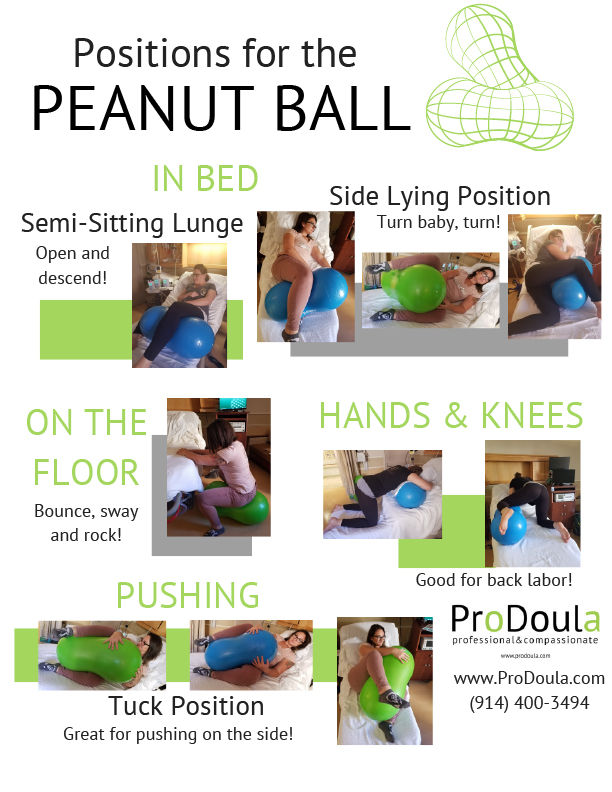The Peanut Ball: A New Snack or A Tool for Birth?
Posted on:
May 15, 2018 | Doula, Doula Training, Labor & Birth

Peanut ball? You’re a doula so there’s a good chance you are familiar with what a birth ball is. You know, the big exercise ball that a laboring person can use to rock and bounce their way through labor.
But have you heard of the peanut ball?
I’m not talking about a delicious snack, but rather a very useful tool for labor that is popping up in labor and delivery rooms across the nation.
What is a peanut ball?
A peanut ball is similar to a birth ball but is shaped exactly how it sounds, like a peanut. It is oblong with two larger ends and a narrow middle. Typically, they are used for exercise and physical therapy, but they have been found to be beneficial during childbirth. They are becoming increasingly popular for use during both un-medicated birth, and birth with the support of an epidural.
I’m a little nuts about them and here is why…
Benefits of Peanut Balls in Labor
Like a birth ball, a laboring person can use a peanut ball to sit on, rock on, and help keep their pelvis open. However, it doesn’t require you to be a master balancer to keep from falling off as you rock back and forth. It can also be used as a positioner, with or without an epidural to help keep the hips in optimal position. It can widen the pelvis, helping the baby descend, speeding things up, and reducing the risk of a cesarean birth.
Can a peanut ball really do all those things?
Recent studies are showing us it can! An observational study has shown that it can:
-
The study found that the first stage of labor can be shortened an average by 90 minutes.
-
The pushing phase of labor was shortened by an average of 22 minutes.
-
In the study, the cesarean rate of the group of laboring persons who used the peanut ball was 13% less than the group who did not.
Using the Peanut Ball

We often associate the birth ball with unmedicated birth because it is mostly limited to use on the floor and that requires the ability to ambulate. The peanut ball can be used to support all types of birth! (Cool, right?!)
They can be used in hospital births, births in a birth center, homebirths, non-medicated births, and births supported by epidural. The laboring person can use it on the floor or in the bed. They can use it when they are feeling energized and wanting to be up or when they are tired and wanting to lay down.
Here are a few ways you, the doula, along with your client’s nurse and other support persons can position the laboring person with the peanut ball:
On the floor: Using a large size peanut ball on the floor, help your client straddle it and sit in the middle. The peanut ball can provide the stability for them to rock back and forth or side to side.
Hands and Knees: For your client that may be experiencing back pain, you can help position them in bed on their hands and knees with the appropriate size peanut ball under one leg. This helps keep their pelvis open and frees up their back for you to apply hip squeezes, counter pressure, or massage. You can switch sides every few contractions to keep the client balanced.
Semi-reclined: For clients with or without an epidural, they scan be in a semi-reclined position with one leg resting over the peanut ball positioned close to hip level. This can help promote dilation and help the baby descend through the pelvis.
Side lying: Another position for clients with or without an epidural, is positioning them on their side with the peanut ball placed between their legs as close to hip level as comfortable or, with one leg draped over the side of the peanut ball. Provide extra comfort with the placement of pillows for support. This position promotes dilation and descent, and is even believed to help a baby in a less favorable position rotate.
Authored by: Jennifer del Sol, Co-owner of Mainstay Doulas & Co.
